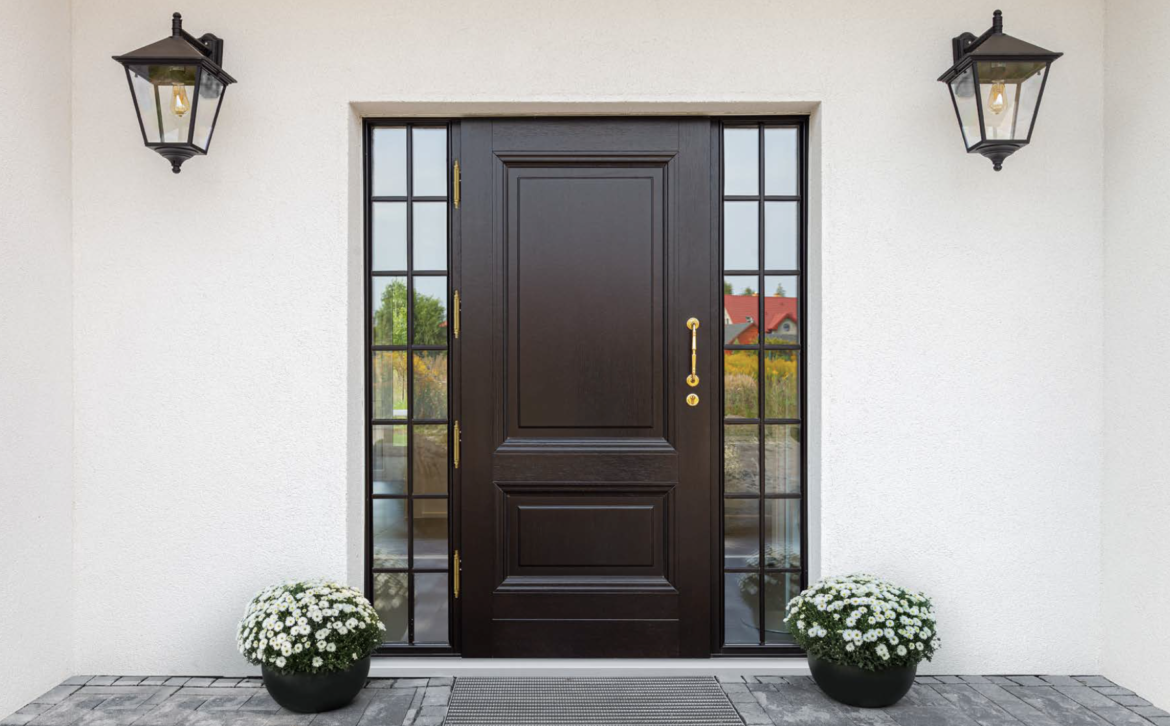When it comes to your home, the external door is more than just an entrance. It’s a crucial element that contributes to security, insulation, and overall aesthetic appeal. A well-chosen external door can enhance the first impression of your home, making it welcoming while ensuring that it remains secure. With various styles and materials available, selecting the right external door can feel overwhelming. However, understanding your options and the benefits can help you make an informed decision. In this article, we’ll explore the different types of external doors, their benefits, important factors to consider, installation tips, and maintenance guidelines. Whether you’re building a new home or upgrading your current door, this guide will help you choose the perfect external door for your needs.
Types of External Doors
External doors come in a variety of materials and styles, each offering unique features and benefits. The most common materials include wood, fiberglass, and steel.
Wood doors are classic and can be customized to fit any design aesthetic. They provide excellent insulation but require regular maintenance to prevent warping and damage from the elements.
Fiberglass doors are becoming increasingly popular due to their durability and low maintenance. They can mimic the look of wood but are resistant to dents and scratches. Additionally, fiberglass doors offer great energy efficiency.
Steel doors are the most secure option, providing enhanced protection against break-ins. They are also energy-efficient and can withstand harsh weather conditions. However, they can be prone to rust if not properly maintained.
In terms of style, options range from traditional designs with intricate details to modern, sleek appearances. Understanding these types will help you choose a door that suits both your practical needs and your personal style.
Benefits of High-Quality External Doors
Investing in a high-quality external door comes with numerous advantages. One of the primary benefits is enhanced security. Quality doors are often equipped with better locks and reinforced frames, making it more difficult for intruders to gain access to your home. This peace of mind is invaluable for homeowners.
Another significant benefit is energy efficiency. High-quality external doors are designed to minimize air leaks, keeping your home warm in the winter and cool in the summer. This can lead to lower energy bills and a more comfortable living environment.
Aesthetic appeal is another reason to consider a high-quality external door. These doors can be customized in various colors and finishes to match your home’s exterior, elevating its curb appeal. Moreover, a well-chosen door can increase your property’s value, making it a worthwhile investment.
Lastly, high-quality doors often come with warranties, ensuring that you are protected against defects and that your investment is safeguarded for years to come.
Factors to Consider When Choosing an External Door
When selecting an external door, several factors should guide your decision. One of the first considerations is the climate in your area. If you live in a region with harsh winters or intense heat, you’ll want a door that provides excellent insulation and weather resistance.
Next, consider your style and design preferences. Your External Door should complement your home’s architecture and overall look. Do you prefer a modern or traditional style? Take some time to explore different designs and finishes to find the perfect match.
Budget is also an essential factor. High-quality doors come at various price points, so it’s important to find a balance between quality and cost. Remember, investing in a good door can save you money in the long run through energy savings and reduced maintenance.
Lastly, think about any additional features you might want, such as smart locks or decorative glass panels. These elements can add functionality and enhance the overall appearance of your door.
Installation Tips for External Doors
Proper installation of an external door is crucial for its performance and longevity. While you might be tempted to tackle this project yourself, professional installation is often recommended to ensure everything is done correctly.
Before installation, make sure to measure the door frame accurately. An ill-fitting door can lead to drafts and security issues. If you’re hiring a professional, check their credentials and reviews to ensure you’re working with someone reliable.
The installation process typically involves removing the old door, preparing the frame, and securing the new door in place. Proper sealing and insulation are also vital to prevent air leaks.
One common mistake to avoid is neglecting the threshold. A well-installed threshold helps to keep out water and insects while providing a smooth transition from the outside to the inside.
After installation, always check the door’s operation. It should open and close smoothly without any resistance. A well-installed door will provide both security and ease of use for years to come.
Maintenance and Care for External Doors
Maintaining your external door is essential to ensure its longevity and performance. Regular cleaning is the first step in keeping your door looking great. For wood doors, use a gentle cleaner to avoid damaging the finish, and consider applying a protective sealant periodically.
Fiberglass doors require minimal maintenance but should still be cleaned occasionally to prevent dirt buildup. Use a mild detergent and water to keep them looking fresh.
Steel doors, while durable, can be prone to rust. Regularly inspect for any signs of corrosion and touch up paint as needed. Keeping the door frame and hardware well-lubricated will also help maintain smooth operation.
In addition to cleaning, inspect your door for any signs of wear or damage. If you notice gaps, drafts, or difficulty in operation, it may be time to address repairs or even consider a replacement.
Lastly, remember to check the weather stripping regularly. Damaged or worn weather stripping can lead to drafts and increased energy costs, so replacing it when needed is an easy way to enhance your door’s efficiency.
Conclusion
Choosing the right external door is an important decision that affects your home’s security, energy efficiency, and curb appeal. By understanding the different types of doors, their benefits, and the factors to consider, you can make an informed choice that meets your needs. Proper installation and maintenance will ensure that your investment lasts for years to come. Whether you opt for a classic wooden door, a modern fiberglass option, or a robust steel entryway, the perfect external door is out there, ready to enhance your home.




